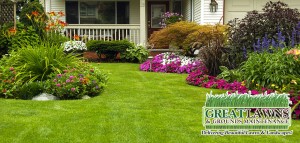When fruits and vegetables are organic, they taste great and are more rich in nutrients than the standard produce you’ll find at your grocery store. Why not save your money and grown your own veggies? Read the following article to find out more about organic gardening.
Keep your plants thriving through the winter by bringing them inside. This is especially useful if you have a particular plant that you love or was expensive. Carefully dig around the rootball and replant in an appropriate pot.
Instead of leaving clumps of irises intact, divide them so that your flowers can grow in a more healthy manner. If you split up clumps of them, you will eventually have more of this flower. When foliage is dead, lift bulbous irises. The bulbs should split up normally in the hand, and should flower when replanted for the next year. You should split up rhizomes by utilizing a blade. Cut new pieces from the outside and discard the old center. At the least, each piece will need to have one strong offshoot. Plant immediately.
An easy, inexpensive way to give them nutrients is to pour the leftover water from your steamed vegetables into the soil. Try adding used coffee grounds to the soil around plants that grow in acidic soil. Chamomile tea can be an effective treatment against fungus attacking plants.
Irrigate your garden efficiently. Take advantage of a soaker hose so that you don’t need to water every single plant individually, or have to keep filling up your watering can. To protect your plants, keep the flow on the soaker down. This allows you to leave the hose running as you go about your business.
Plant strawberries for your children. Children enjoy picking fresh fruit, especially if they can eat it right away.
If you are gardening with a cut, make sure that you adequately protect it from dirt and chemicals. The dirt and grime you come into contact with while gardening can cause even a small cut to become seriously infected. Bandage all cuts completely, using bandages that cover and seal cuts.
Keep the temperature in your home between 65 and 75 degrees Fahrenheit, if you are keeping or growing any kind of plant in your house. In order to encourage proper growth, they will need that warmth. If you don’t like keeping your home that temperature in the winter, you may wish to consider getting a heat lamp, instead, to keep your organic plants the correct temperature.
If you want to start a small organic garden indoors, evaluate the amount of natural light that is present. If the garden will receive little sunlight, find plants that can grow in medium or low-light environments. If you simply must have a plant that has higher requirements for sunlight, you can use indoor UV lamps.
Do not rush when planting seeds. Start first by moisturizing your soil. Then you want to spread your seeds evenly while making sure that they have enough room to grow. Typically, seeds should be planted at a depth that is equal to three times their size. Some seeds should not be buried at all as they need light to grow.
You no longer need to buy inferior produce. Use what you learn from this article in order to grow your own vegetables and fruits.
